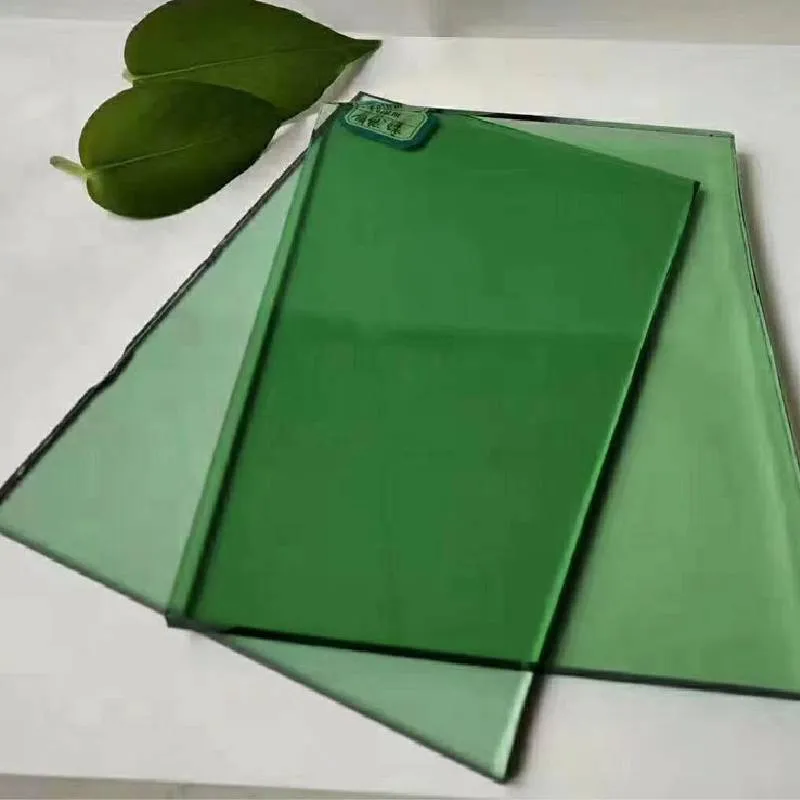Understanding Tempered Glass Composition, Characteristics, and Applications
Tempered glass, also known as toughened glass, has gained significant popularity in various industries due to its remarkable strength and safety features. The process of tempering involves heating the glass to a high temperature and then rapidly cooling it, which results in the formation of a compressive layer on the surface of the glass. This unique treatment significantly enhances the glass's mechanical strength, making it more resistant to impacts, thermal stresses, and breakage compared to regular glass. But what is tempered glass made of, and how does its composition contribute to its exceptional properties?
Composition of Tempered Glass
The primary raw material for tempered glass is silica (silicon dioxide), which is the main component of standard glass. Other ingredients, such as soda ash, limestone, and alumina, are added to lower the melting point and enhance the physical properties of the glass. The combination of these materials creates a homogeneous molten glass, which is then shaped into sheets during the manufacturing process.
Once the glass is formed, it is subjected to the tempering process. This involves heating the glass to temperatures of around 600 to 700 degrees Celsius (1112 to 1292 degrees Fahrenheit) in a furnace. This heat treatment alters the internal structure of the glass at a molecular level, creating a state of prestress. When the glass cools down rapidly, the surface solidifies first, while the interior remains hot and continues to cool, leading to internal compressive stresses. This is what makes tempered glass much stronger than standard glass.
Characteristics of Tempered Glass
One of the most remarkable features of tempered glass is its strength. It is approximately five to six times stronger than standard annealed glass of the same thickness. This extraordinary strength makes tempered glass an ideal choice for applications requiring durability and resistance to breakage.
Another essential characteristic is its safety. When tempered glass breaks, it shatters into small, blunt pieces rather than sharp shards, significantly reducing the risk of injury. This safety feature has made tempered glass a preferred material for many applications, including glass doors, shower enclosures, and glass facades in buildings.
tempered glass made of
Additionally, tempered glass offers excellent thermal resistance. It can withstand high and fluctuating temperatures without warping or cracking. This property is particularly beneficial in applications such as glass cooktops and oven doors, where exposure to heat is frequent.
Moreover, tempered glass can be treated with various coatings to enhance its performance further. For example, anti-reflective coatings can be applied to improve visibility and aesthetics, while low-emissivity (Low-E) coatings can enhance energy efficiency by reflecting heat back into a room.
Applications of Tempered Glass
The unique characteristics of tempered glass make it suitable for a wide range of applications across various industries. In the construction sector, it is often used in glass curtain walls, staircases, and balustrades where safety and aesthetics are paramount. The automotive industry also relies on tempered glass for side and rear windows, which require strength and resistance to impact.
In the domestic sphere, tempered glass can be found in shower doors, bathroom vanities, and tabletops, giving spaces a modern and elegant look while ensuring safety. Its use in appliances such as ovens and cooktops is also noteworthy, as it can withstand high temperatures without deteriorating.
In recent years, the growing trend towards sustainable building practices has further propelled the use of tempered glass. Its energy efficiency and durability contribute to greener building standards, making it an essential material in contemporary architecture.
Conclusion
In summary, tempered glass is a remarkable material made from a carefully balanced composition of silica and various additives. Through the tempering process, it achieves superior strength, safety, and thermal resistance, making it suitable for a diverse array of applications. From construction to automotive and household uses, tempered glass continues to play a vital role in enhancing both functionality and design in our everyday environments. As innovation in glass technology progresses, it will be exciting to see how tempered glass adapts to meet future needs and challenges.
 Afrikaans
Afrikaans  Albanian
Albanian  Amharic
Amharic  Arabic
Arabic  Armenian
Armenian  Azerbaijani
Azerbaijani  Basque
Basque  Belarusian
Belarusian  Bengali
Bengali  Bosnian
Bosnian  Bulgarian
Bulgarian  Catalan
Catalan  Cebuano
Cebuano  Corsican
Corsican  Croatian
Croatian  Czech
Czech  Danish
Danish  Dutch
Dutch  English
English  Esperanto
Esperanto  Estonian
Estonian  Finnish
Finnish  French
French  Frisian
Frisian  Galician
Galician  Georgian
Georgian  German
German  Greek
Greek  Gujarati
Gujarati  Haitian Creole
Haitian Creole  hausa
hausa  hawaiian
hawaiian  Hebrew
Hebrew  Hindi
Hindi  Miao
Miao  Hungarian
Hungarian  Icelandic
Icelandic  igbo
igbo  Indonesian
Indonesian  irish
irish  Italian
Italian  Japanese
Japanese  Javanese
Javanese  Kannada
Kannada  kazakh
kazakh  Khmer
Khmer  Rwandese
Rwandese  Korean
Korean  Kurdish
Kurdish  Kyrgyz
Kyrgyz  Lao
Lao  Latin
Latin  Latvian
Latvian  Lithuanian
Lithuanian  Luxembourgish
Luxembourgish  Macedonian
Macedonian  Malgashi
Malgashi  Malay
Malay  Malayalam
Malayalam  Maltese
Maltese  Maori
Maori  Marathi
Marathi  Mongolian
Mongolian  Myanmar
Myanmar  Nepali
Nepali  Norwegian
Norwegian  Norwegian
Norwegian  Occitan
Occitan  Pashto
Pashto  Persian
Persian  Polish
Polish  Portuguese
Portuguese  Punjabi
Punjabi  Romanian
Romanian  Russian
Russian  Samoan
Samoan  Scottish Gaelic
Scottish Gaelic  Serbian
Serbian  Sesotho
Sesotho  Shona
Shona  Sindhi
Sindhi  Sinhala
Sinhala  Slovak
Slovak  Slovenian
Slovenian  Somali
Somali  Spanish
Spanish  Sundanese
Sundanese  Swahili
Swahili  Swedish
Swedish  Tagalog
Tagalog  Tajik
Tajik  Tamil
Tamil  Tatar
Tatar  Telugu
Telugu  Thai
Thai  Turkish
Turkish  Turkmen
Turkmen  Ukrainian
Ukrainian  Urdu
Urdu  Uighur
Uighur  Uzbek
Uzbek  Vietnamese
Vietnamese  Welsh
Welsh  Bantu
Bantu  Yiddish
Yiddish  Yoruba
Yoruba  Zulu
Zulu 

